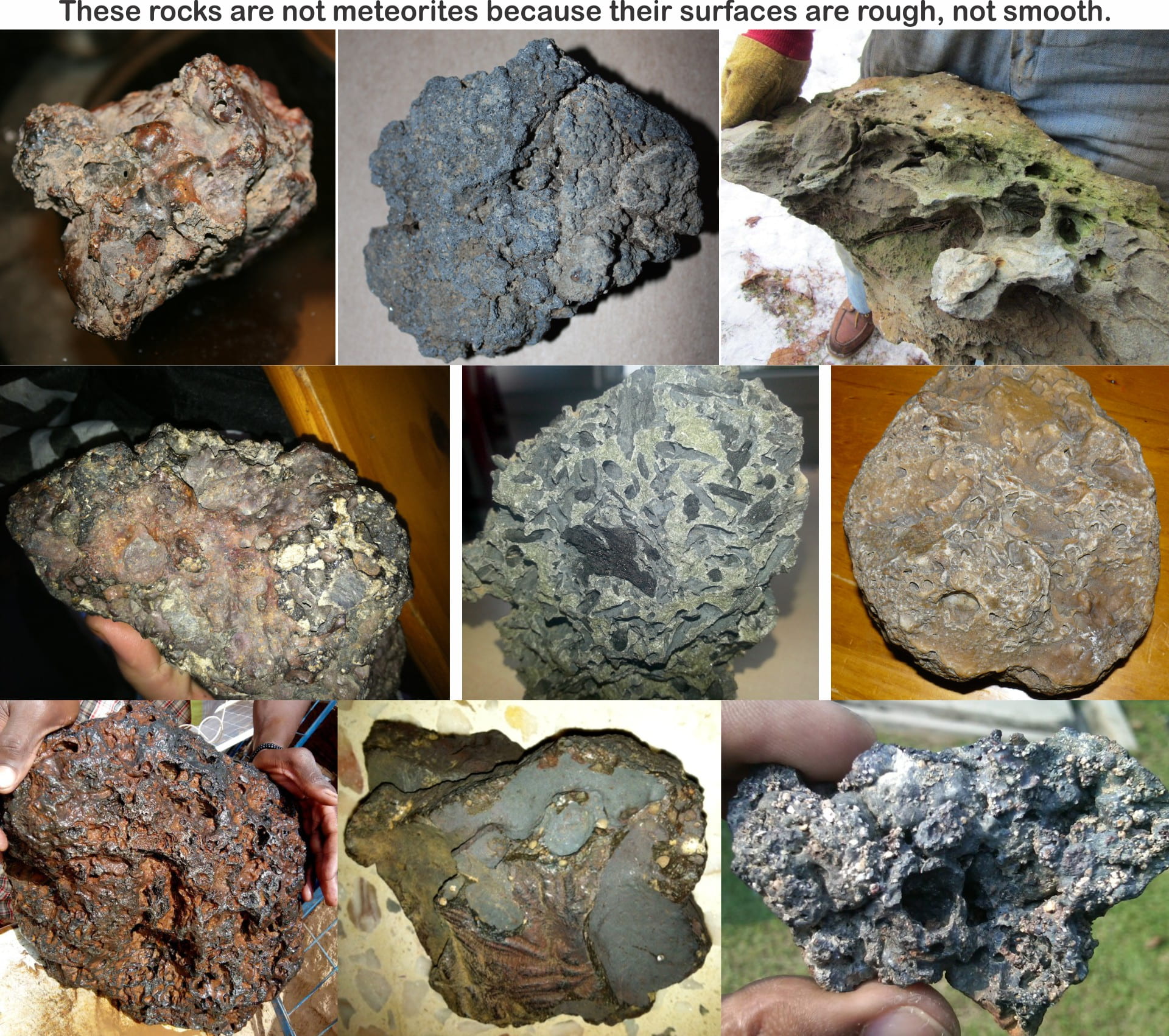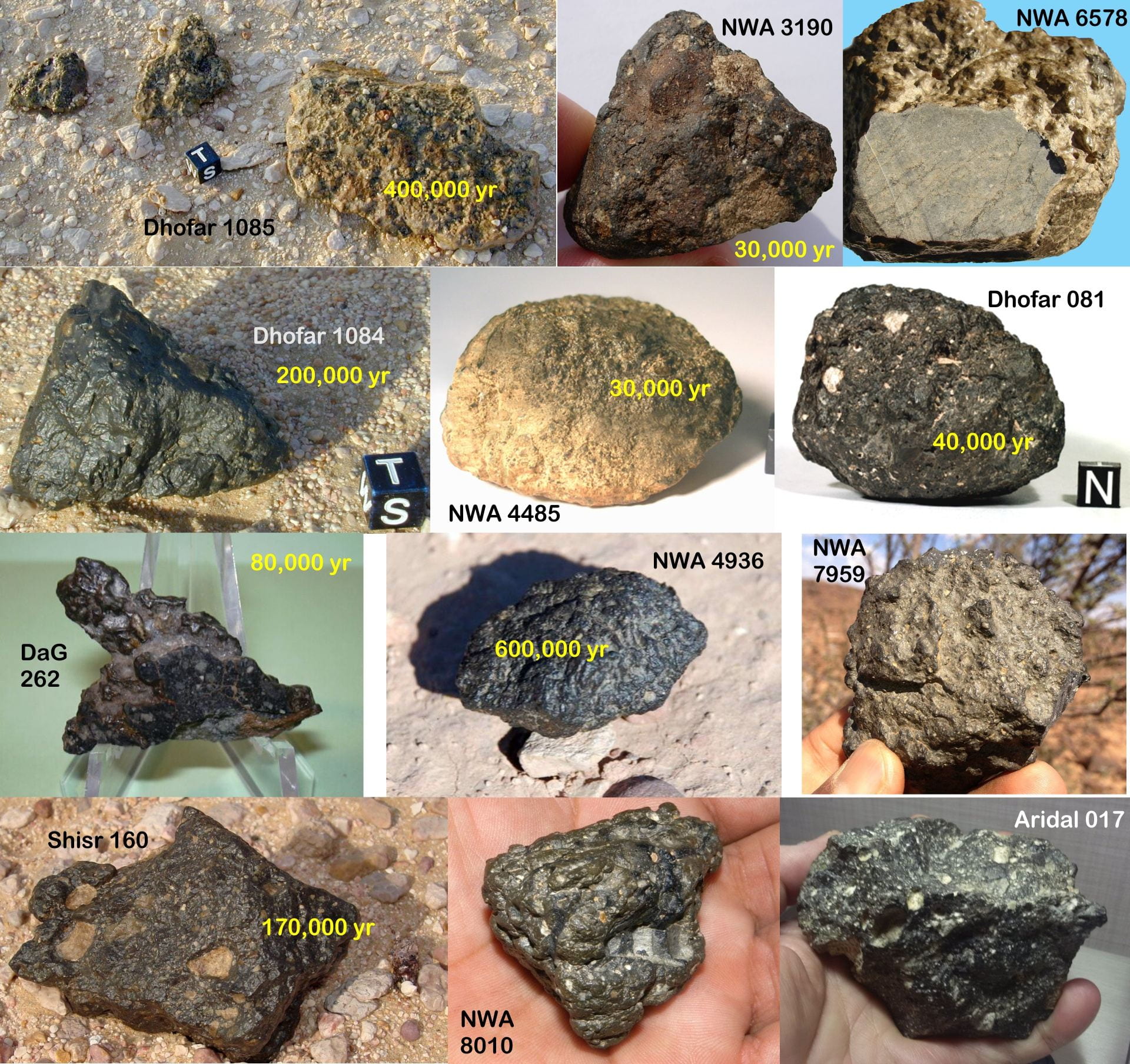The surface is too rough for a meteorite
For small meteoroids, 90% of the mass is lost to ablation as they come through Earth’s atmosphere. Edges, corners, rough surfaces, and any protuberances are the first parts to ablate away. Put an ice cube in water and wait for 90% to melt. The “cube” that remains will have no edges or points. It is like that with meteorites. As a consequence, most stony meteorites have rounded and smooth exteriors, except where they have broken.

Meteorites do break apart in the atmosphere and that can lead to some rough surfaces. See the Ash Creek samples below.
Meteorwrongs from temperate climates
All the photos below were sent to me by persons who wanted to know if the rock was a meteorite. None of them are meteorites. The surfaces are too rough and, of course, none of them have fusion crusts. If a rock looks like this, then it is not a meteorite.



Meteorites from old, hot deserts
The observant among you may note, “but you have photos of lunar meteorites with rough exteriors on your lunar meteorite website. Correct, but the environmental circumstances are different.

Nearly all lunar meteorites with rough exteriors were found in hot deserts, mainly northwest Africa (NWA) and Oman (Arabian peninsula). These rocks have been lying on the surface of the desert for tens to hundreds of thousands of years. During that time, they have been “sand blasted” by wind-blown sand, which has removed their fusion crusts and preferentially dug deeper into some places on the exterior of the meteorite than others. Some are pieces of larger meteorites that have simply fallen apart over hundreds of thousands of years, e.g., Dhofar 1085 (Oman) in the upper left.
Here are some other kinds of meteorites with rough surfaces from the Sahara Desert: NWA 11259 |
Few meteorites found in the temperate climates have been exposed at the Earth’s surface for “tens to hundreds of thousands of years” because there are few surfaces that old in, for example, North America or Europe. A meteorite that lands on the surface of Earth gets buried with time (hundreds to thousands of years). Burying a meteorite preserves the fusion crust.
 Map of meteorite finds from Roosevelt County, New Mexico. Image credit: Meteoritical Bulletin Database and Google Earth.
Map of meteorite finds from Roosevelt County, New Mexico. Image credit: Meteoritical Bulletin Database and Google Earth.
The only place in the U.S of which I am aware where meteorites have been found with very old terrestrial ages (50,000-100,000 years) is Roosevelt County, New Mexico. This is a special place where the wind has been blowing the surface soil away faster than new soil accumulates, what geologists call a “blowout area” or “deflation surface.” Between 1968 and 2005, 110 meteorites were found in the area. All are ordinary chondrites except for one ureilite. Most of the rocks have no fusion crust. (I have been unable to find a decent “whole-rock” photo of a Roosevelt County meteorite.) To stress a point I make elsewhere, however, Roosevelt County meteorites are not big rocks. The masses range from 2 g to 8.35 kg, but the median mass (half are smaller, half are larger) is only 25 g, about an ounce.
So, I stick with my story: Unless you found the rock in an old desert, if it has a rough surface with no fusion crust, then almost certainly it is not a meteorite.
Broken meteorites can have rough surfaces
Meteorites do break apart while coming through the atmosphere and after they land. The breakage leads to some rough surfaces, but usually at least one surface is smooth and rounded.
